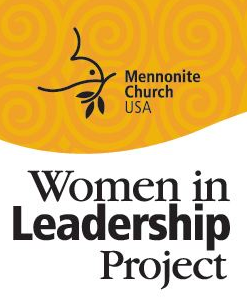 Linda Gehman Peachey is a freelance writer living in Lancaster, Pennsylvania. She has a Master of Divinity from Anabaptist Mennonite Biblical Seminary and is currently a Doctor of Ministry student at Lancaster Theological Seminary. Previously, Linda worked for Mennonite Central Committee on women’s concerns and also served with her husband, Titus, as co-director of Peace and Justice Ministries. She and Titus have two adult daughters and enjoy visiting them in Chicago and Guatemala. She is a member of East Chestnut Street Mennonite Church and serves on the steering committee for the Women in Leadership Project of Mennonite Church USA.
Linda Gehman Peachey is a freelance writer living in Lancaster, Pennsylvania. She has a Master of Divinity from Anabaptist Mennonite Biblical Seminary and is currently a Doctor of Ministry student at Lancaster Theological Seminary. Previously, Linda worked for Mennonite Central Committee on women’s concerns and also served with her husband, Titus, as co-director of Peace and Justice Ministries. She and Titus have two adult daughters and enjoy visiting them in Chicago and Guatemala. She is a member of East Chestnut Street Mennonite Church and serves on the steering committee for the Women in Leadership Project of Mennonite Church USA.
I have to be honest, I’m glad Lent is over.
Every year I struggle with this season and what it means to walk with Jesus toward the cross.
I especially find myself wrestling with the focus on his death and message that says this is where God’s love was most fully revealed, because Jesus did not resist or retaliate against those who tortured and crucified him.
I often have to wonder what this event was like for those who had loved and walked with Jesus. What was it like, for instance, for the women who had traveled with Jesus all the way from Galilee to Jerusalem? (Mark 15: 40-41) They had heard Jesus teach, and saw him heal and restore the lives of so many. They had found so much promise in this new movement and in the way Jesus empowered them to share with one another, relinquish their shame, and claim their dignity as God’s daughters.
Yet they must have known that all of this could come apart. No doubt, these women observed the growing tension between Jesus and those who felt threatened by the rising power of his followers. No doubt they sensed that Jesus’ life was at risk and feared for what might happen next.
What was it like then to be awakened in the middle of the night by frantic knocking at the door, only to hear the terrible news that Jesus had been taken? And to learn that even now he was being tried by the authorities, and beaten by Roman soldiers?
Even worse, what was it like for them to watch throughout the next day, and follow along as he was taken out of the city and crucified? It must have been so devastating, so utterly and completely gut-wrenching, to see him torn and bleeding, and they were totally helpless to stop it.
Truly, I can’t fathom what that must have been like. But I can’t believe they saw this as good news. Rather, I imagine they felt despair, foreboding and even anger. Why did their leaders keep collaborating with the Roman occupiers? And why, oh why did they have to kill him in such a painful, humiliating way?
Of course, they knew that Jesus’ love and solidarity with them is what made him so dangerous. He had inspired them to love themselves, God and each other, and to resist the degradation and disgrace imposed on them by those who wanted only their labor, their resources and their obedience. But now it was all over.
What would they do now? Perhaps they were stunned into silence. Or perhaps they found themselves pleading with God to do something, anything, to somehow care for Jesus, to somehow not let everything, all their hopes and dreams, end in such a terrible, terrible way. Surely, surely, it could not end like this!
What did they do then, after they saw Jesus die and his body carried away? Did they sit together, keeping vigil? Were  they also afraid their lives might be in danger? How did they comfort one another? And who first suggested that they should go to the tomb and show their love for Jesus one last time?
they also afraid their lives might be in danger? How did they comfort one another? And who first suggested that they should go to the tomb and show their love for Jesus one last time?
Finally, FINALLY, the second long night ended and they were able to go to the tomb. And that’s when they experienced the most amazing thing. Jesus was still alive and would be with them always!
Their attentive, courageous love enabled them to see him first. God was still with them, enlivening and calling them to continue on the way, toward all that God had created them to be.
The movement born of God’s love and justice would go on. It did not end at the cross. It did not end. Death is not the end for those who followed Jesus 2,000 years ago or for us who still follow him today. Thanks be to God!

